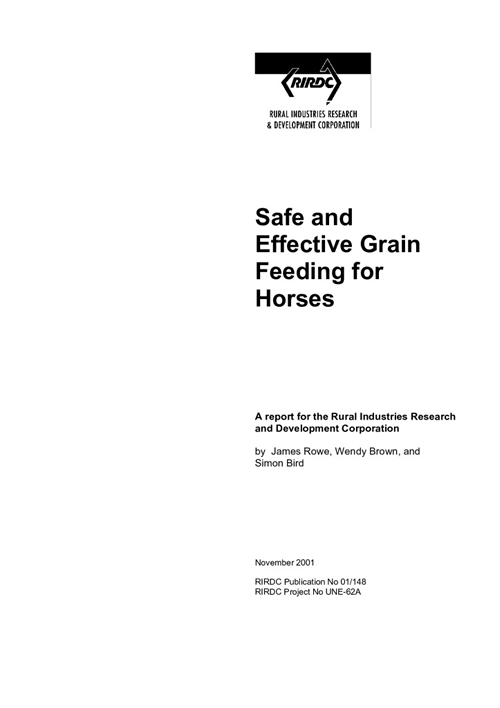The aim of this research program was to develop safer and more effective ways of feeding grain to horses. Horses have a limited ability to digest starch in the small intestine and the rapid fermentation of undigested starch in the caecum and colon lead to an accumulation of acidic end products that initiate a cascade of adverse effects – the best known being laminitis or founder. The focus of the project was to develop and calibrate an in vitro method for predicting pre-caecal starch digestion and then use this to identify the safest grains and best processing methods to reduce the amount of starch passing undigested to the caecum and colon.
This report covers details of two in vitro assays, one for estimating enzyme starch digestion and the second for measuring rate of fermentation. These assays were then used to examine differences between a wide range of feed grains and processing methods. There are descriptions of two in vivo experiments designed to confirm the in vitro predictions in relation to pre-caecal starch digestion and investigate the role of exogenous enzyme preparations to improve digestion of wheat grain. There is a review of the characteristics of oat grain that make its digestibility so variable and a report on the potential value of triticale as a suitable grain for horses.





